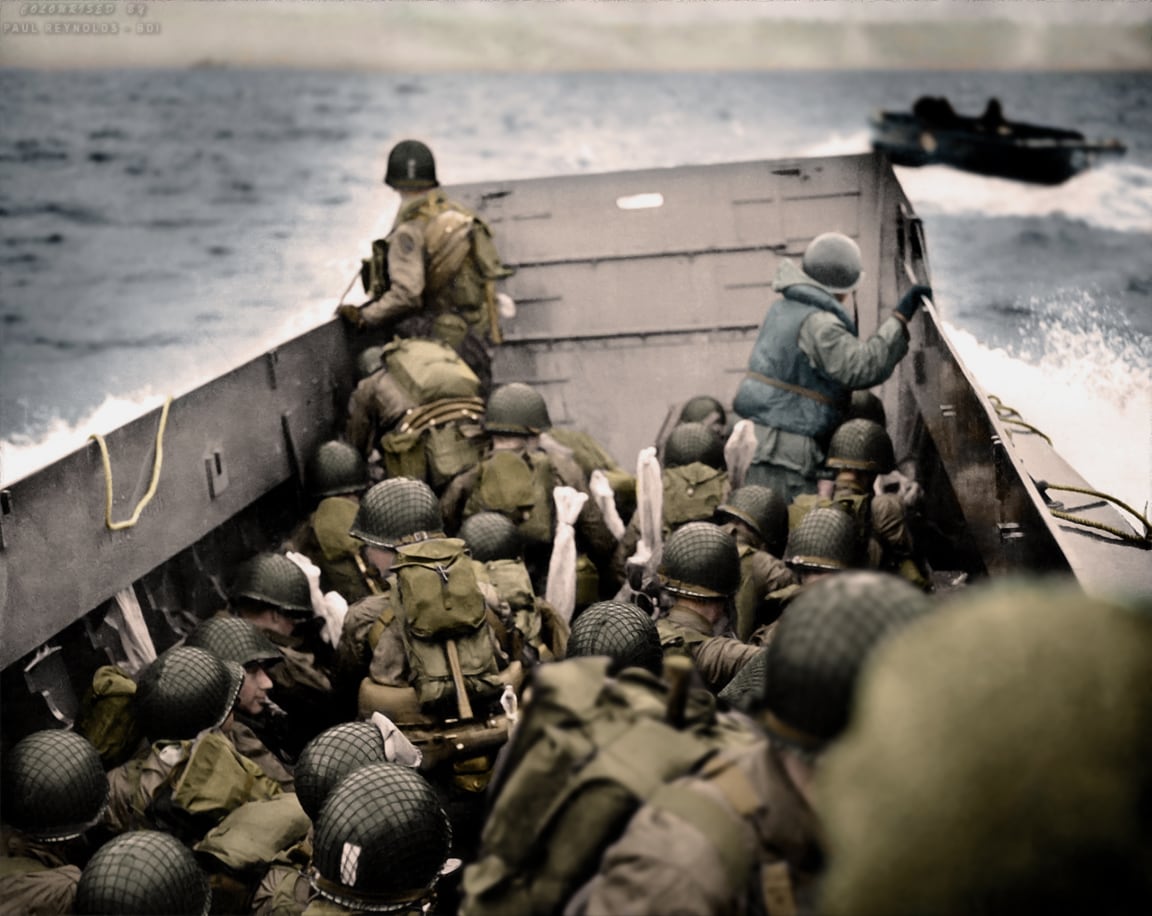The Normandy beaches hint at what the sea-salt air would have tasted like. Trench boots, caked with mud, show just how far troops trekked to seek shelter from enemy fire. But nothing beats the smiles of battle-weary soldiers flashing their pearly whites after emerging alive and victorious from some of the most gut-wrenching battles in history.
For Paul Reynolds, an artist who has colorized more than 200 black-and-white war photographs in a year, the two-hour-long process for each image is worth it.
"I really enjoy bringing the old photos back to life, and it brings me great satisfaction to see so many people — young and old — taking an interest in our history through my colourisations," Reynolds, who hails from the United Kingdom, recently told Military Times in an email. "The [photos] come to me from all over the world."
More than 400,000 U.S. troops died during World War II, and more than 115,000 in World War I. The striking images colorized by Reynolds and fellow hobbyists and artists such as Doug Banks, Royston Leonard, Lori Lang and Benjamin Thomas bring the humanity — underscored by serious conflict — to new life.
Reynolds, who uses Photoshop to layer in color, said it can take him up to six hours to clean up and colorize a photo.
But the artists' work extends far beyond the palette, as they also take extensive time to research their material.
The first things Thomas and Lang said they look for are elements that make the photo an uncommon icon: When and where was it taken? What theater of conflict? Who is depicted?
"Uniforms and equipment obviously vary during the course of a war, colours can vary depending on the theatre, and even the physical location, time of year and time of day will inform the interpretation of vegetation colouring, lighting, how shadows will appear, skin ... everything," Thomas, from Melbourne, Australia, said.
Thomas, who works primarily with U.S., British and allied troop photos, thinks the way people view history has been skewed by constantly seeing only shades of grey and sepia.
"The reality is that people in the past experience life in the full range of colours we do today," Thomas said. "I grew up looking at a hand-colourised photograph of my grandfather that hung on the wall of my grandmother's house. It always seemed a little more 'real' being in colour."
In a few weeks, Europe will mark the 70th anniversary of Victory in Europe Day, much like Marines have been paying homage to the Battle of Okinawa since April 1. As such anniversaries approach, it feels like an appropriate time to take a new look at some decades-old images of those wars.
These artists and others are creating a new kind of war history archive, sharing their work with each other on personal websites and especially on social media.
With the millions of military photographs hailing from historical societies, museums and national archives, Lang said she will have color projects for a long time.
"I especially like restoring images for families so they can pass on their history to future generations," she said. "After I colorize an image, I realize I'm the first person to see that image as it may have looked decades ago when it was taken — and that definitely brings that moment back to life."
View more of their work in this gallery, and on these WW1 Colourised Photos and WW2 Colourised Photos Facebook pages.
Editor's note: Photos and photo captions are courtesy of artists' Facebook pages, but may be edited for brevity. Photos featured are from Defense Department and military service pages, National Archives, Library of Congress, newspapers or donated by third parties. Permissions granted by all artists.




